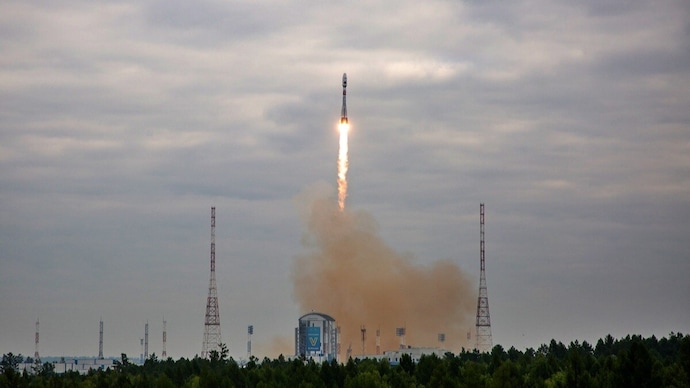
'Another meeting point...': Isro congratulates Russia as it sends Luna-25 to moon
The Isro congratulated Russia's Roscosmos for blasting off Luna-25 lunar craft to the moon. Both Chandrayaan-3, launched on July 14, and Luna-25 are racing against time to be the first to land on the lunar south pole later this month.

The Indian Space Research Organisation (ISRO) on Friday congratulated its Russian counterpart Roscosmos for successfully launching Luna-25 craft to Moon's south polar region, the country's first lunar mission in 47 years.
The Russian lander is expected to touch down on the Moon on August 21-22. On the other hand, Chandrayaan-3, which was launched on July 14, is scheduled for a soft landing on the lunar surface on August 23.
Taking to X (formerly Twitter), Isro extended wishes to its Chandrayaan-3 mission and Russia's Luna-25 to achieve their goals.
"Congratulations, Roscosmos on the successful launch of Luna-25. Wonderful to have another meeting point in our space journeys. Wishes for Chandrayaan-3 and Luna-25 missions to achieve their goals," Isro said in a tweet.
RUSSIA'S LUNA-25 BLASTS OFF
Russia launched its first moon-landing spacecraft in 47 years on Friday in a bid to be the first country to make a soft landing on the lunar south polar region, an area believed to hold coveted pockets of water ice.
A Soyuz 2.1v rocket carrying the Luna-25 craft blasted off from the Vostochny cosmodrome, 5,550 kilometers east of Moscow, at 2:11 am on Friday Moscow time, with its upper stage boosting the lander out of Earth's orbit toward the moon over an hour later, Russia's space agency Roscosmos confirmed.
The lander is expected to touch down on the moon on August 21-22, Russia's space chief Yuri Borisov told Interfax on Friday. Russian space agency Roscosmos previously pegged August 23 as the landing date.
Luna-25, roughly the size of a small car, will aim to operate for a year on the moon's south pole, where scientists at NASA and other space agencies in recent years have detected traces of water ice in the region's shadowed craters.
With a mass of 1.8 tons and carrying 31 kilograms of scientific equipment, Luna-25 will use a scoop to take rock samples from a depth of up to 15 centimeters to test for the presence of frozen water.

